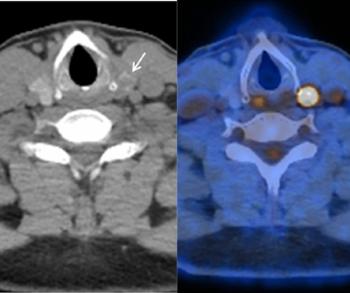
Mystery vendor lays groundwork with order for OIS flat-panel sensors
OIS declines to provide name of imaging customerA major medical imaging vendor is planning to commercialize a new digital x-ray system after placing an order for 300 flat-panel digital detectors developed by Optical Imaging Systems (OIS) of
OIS declines to provide name of imaging customer
A major medical imaging vendor is planning to commercialize a new digital x-ray system after placing an order for 300 flat-panel digital detectors developed by Optical Imaging Systems (OIS) of Northville, MI. OIS executives, who say they are contractually prohibited from divulging the identity of their customer, say the panels are destined for completed x-ray systems that could be commercialized as soon as the end of this year.
OIS is developing flat-panel digital sensors capable of both radiographic and fluoroscopic imaging, according to John McGill, director of business development for sensors at OIS. McGill declined to indicate what material the sensors use, although he did state that they are either amorphous silicon or selenium arrays.
OIS is focusing on development of the glass sensor array itself, around which readout electronics are required to digitize x-rays. OIS customers will be responsible for developing those electronics and for integrating the detectors into completed x-ray systems.
"It's almost like buying a component from an electronics store," McGill said.
The corporate goal of OIS is to supply flat-panel sensors to as many medical imaging manufacturers as possible, allowing them to build the necessary electronics for preprocessing and processing the signal.
"We have the ability to attach the electronics to the glass just like we do with the displays, but the core competency that OIS has is in the panel itself," said Chuck Wilson, OIS chief financial officer.
The company has also kept its options open in regard to the type of flat-panel sensor to be manufactured, maintaining the ability to fabricate both direct (selenium-based) and indirect (silicon-based) x-ray converter panels.
"We're allowing ourselves to be market-driven," McGill said. "We have a capability and we will apply it to where it makes sense."
The order with the unnamed vendor has an estimated value of more than $1.5 million, according to the company. The sensors are scheduled for delivery in the third quarter of this calendar year, while the imaging product in which the sensors will be integrated is scheduled for market introduction by the end of 1997 or in the beginning of 1998.
The identity of the company is difficult to deduce. It could be a multimodality OEM like GE Medical Systems, which unlike competitors Siemens and Philips has not yet revealed its intentions in the digital-detector segment. Or it could be a subsystems developer like Varian Associates, which as of last year had a nonexclusive supply relationship with both OIS and another panel developer, dpiX of Palo Alto, CA (SCAN 10/9/96).
OIS, a subsidiary of plate-glass manufacturer Guardian Industries, holds several contracts with the U.S. Department of Defense to provide active-matrix liquid crystal displays for use in military avionics systems. OIS is also selling display technology to the commercial aerospace industry.
The company can deliver x-ray sensor panels meeting a variety of specifications. The smallest pixel size is 139 microns; the largest is 160. Resolution ranges from 1.9 line pairs to 3.6 line pairs.
These sensors may be up to the task of most radiographic applications, but not mammography, which requires pixels no larger than 50 to 100 microns. OIS would like to get to that level, but the challenge is daunting, at least in the near term.
"The smaller your pixels, the more pixels you need to interconnect," McGill said. "Those interconnections not only take up space on the flat panel, but raise the complexity of fabricating the product. The trick is to meet those challenges with a manufacturing process that will allow these sensors to be mass-produced cost-effectively."
Newsletter
Stay at the forefront of radiology with the Diagnostic Imaging newsletter, delivering the latest news, clinical insights, and imaging advancements for today’s radiologists.



























